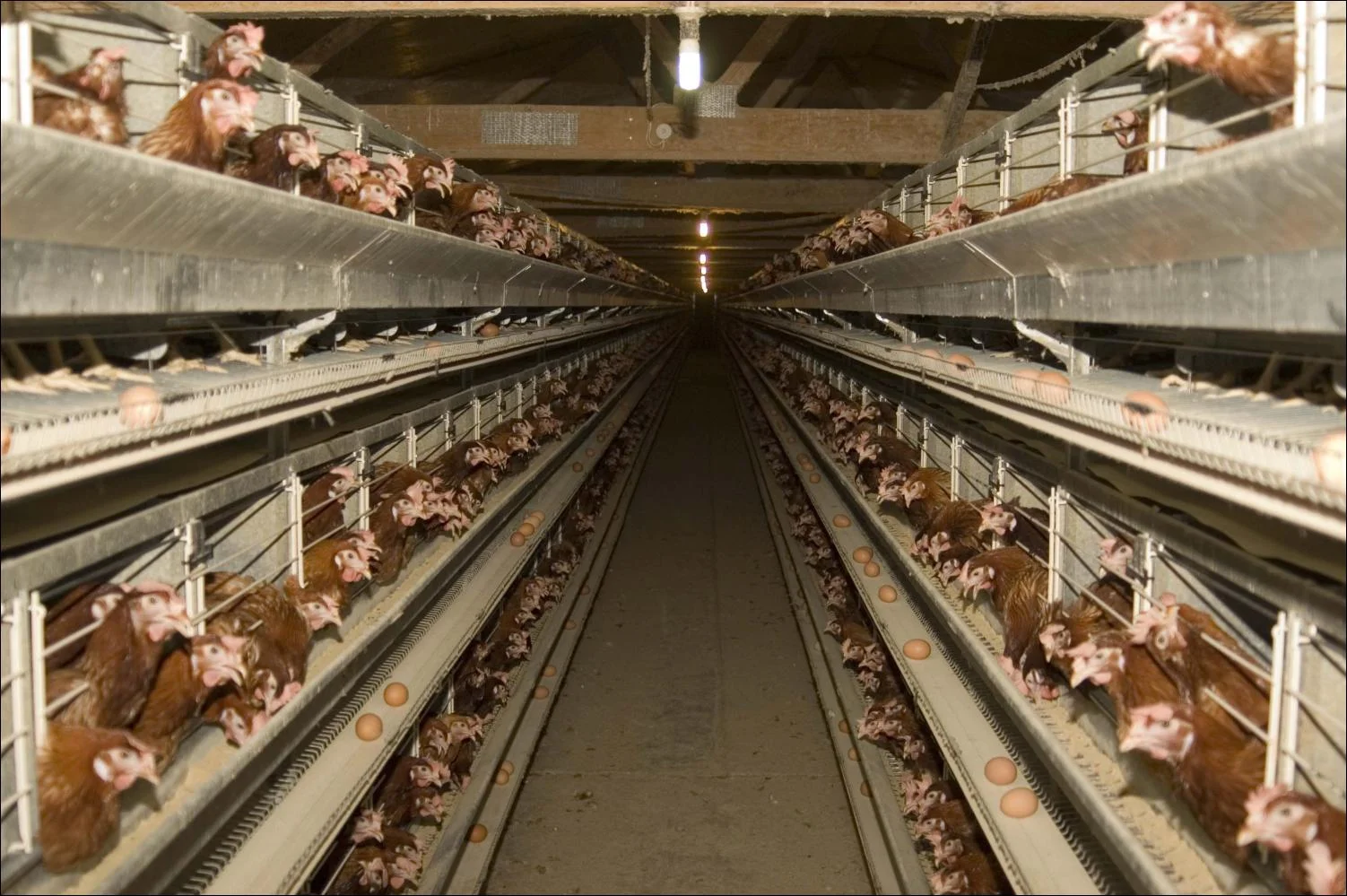Humans have been essential in creating the modern day, egg-laying hen. Our anthropocentric justifications for using domesticated fowl throughout history has contributed to their evolution in ways that would never have occurred without our initial and ongoing intervention.
In other words, humans have acted and continue to act, as an artificial agent for natural selection. This is more true today given our technological capacity as it relates to the manipulation of hens at the genetic level. Today’s hybridization of an entire species has been purely for commercial purposes. We have commodified living beings and in so doing demoted the sanctity of sentient life itself.
What are the origins of today’s egg-laying hen? Domesticated fowl likely evolved from jungle fowl in Southeast Asia and spread west towards India, Africa and eventually to Europe through trade and military conquest. Fowl were used for a variety of purposes from entertainment (cockfighting), meat, eggs and even religious sacrifice. Wild, or jungle fowl, typically laid eggs for the purposes of procreation like most other species. Their laying cycles were seasonal and commonly produced a brood in the spring. It is possible that “the breeding of hens to encourage egg laying may have begun as long as five or even ten thousands years ago.”1 Humans may have taken eggs from a nest for the purposes of either eating them or preventing them from hatching. This may have induced the birds to lay more eggs as a result and even beyond the normal laying season. It is important to note that, “egg laying as an independent activity detached from the giving of life is not a natural phenomenon in birds.”2 Despite this, the modern day hen can lay up to approximately one egg a day for up to 12 to 18 months before their production declines and they become spent – an industry term to describe when a hen is no longer profitable and is sent to slaughter.
Egyptians were the first known culture to produce chickens and eggs in large-scale production reminiscent of today’s factory farms. The Roman’s created “specialized chicken farms”3 that utilized hen houses and other methods to keep predators at bay and infectious diseases from gaining a foothold whenever animals are maintained in close confinement. The keeping and breeding of fowl eventually spread to Europe where it was common for individual households to raise birds for meat or eggs. During the 1600’s, English housewives would often fatten their game-birds “in darkness and confinement, sometimes being blinded as well.”4 Even geese would have the webs of their feet nailed to the floor in an exceedingly cruel effort to help them gain weight. And, “it was the custom of some seventeenth-century housewives to cut the legs off living fowl in the belief that it made their flesh more tender.”5 During the 1800’s recipes emerged that sought to employ sadistic methods in an attempt to improve the taste of the meat. In one example, housewives were encouraged to, “take a red cock that is not too old and beat him to death”.6 It is easy to be horrified by some of these practices. While few if anyone today believes nailing a bird’s feet to the floor improves taste or texture, an indifference to the animals suffering or pain clearly has a long-standing tradition.
Such imagery recalls a more idyllic and simpler time.
Despite this, life was not always ghastly for these birds. As European immigrants and settlers came to America, many would come with chickens and hens in tow. Some were raised on farms and in towns sharing living space with the farmer in their house or outbuildings, free to roam the fields foraging for food and even living among the many other animals on the farm. In fact, it can be argued that some birds once lived the bucolic life so often depicted on packaging and advertising used by modern-day producers and egg boards, albeit falsely, to suggest this by-gone era still holds sway over contemporary farming practices.
On most farms in early 20th century America, it was the women and children who largely looked after the flock. Apparently it was deemed emasculating for men to be poultry caretakers. As a result, “early poultry extension programs were aimed at appealing to farm women”.7 But this would change as poultry farming, like many other forms of animal agriculture, began to scale-up, introduce higher stocking densities, new technologies and automation to increase yields and improve profit margins to benefit the collectivization of the industry. The 1920’s and 30’s saw scientific research facilities emerge in an effort to increase egg-laying capacity through breeding and genetic manipulation programs. Many of these facilities also served the industry by developing vaccines to help curb the unintended consequences of such programs - disease.
Post World War II poultry processing facility.
Battery cages for hens “came into standard commercial use during the 1940’s and the 1950’s. World War II, urbanization, and a growing human population produced a demand for cheap, mass-produced poultry and eggs.”8 Consequently, the keeping and breeding of fowl became increasingly restricted within city limits as urban flocks declined in favour of the increasing hen populations in the ever expanding rural, poultry facilities.
Post World War II also saw the industry evolve as efficiency and mass-production imposed structural changes to the breeding, raising, housing and slaughter of egg-laying hens. This new system would become known as vertical integration - the combination in one company of two or more stages of production normally operated by separate companies.
It is fair to say that chickens and egg-laying hens “were the first farmed animals to be permanently confined indoors in large numbers in automated systems based on intensive genetic selection for food-production traits and reliance on antibiotics (substances produced by microorganisms) and other drugs (chemicals). In the twentieth century, the poultry industry in the United States became the model for animal agriculture throughout the world.”9
To learn more about modern day farming practices and the life cycle of an egg laying hen, please go to: Life of A Hen
Footnotes
1, 2. Karen Davis, Prisoned Chickens, Poisoned Eggs – An inside look at the modern poultry industry, 2nd Edition, (Summertown: Book Publishing Co., 2009), 2
3. Davis, Prisoned Chickens, Poisoned Eggs – An inside look at the modern poultry industry, 2nd Edition, 3
4. Keith Thomas, Man and the Natural World, Changing Attitudes in England 1500-1800, (Great Britain: Allen Lane, 1983), cited in Davis, 3
5. Thomas, Man and the Natural World, Changing Attitudes in England 1500-1800, cited in Davis, 3
6. Diane Ackerman, A Natural History of the Senses, (United States: Vintage Books, 1990), 147, cited in Davis, 3
7. Davis, Prisoned Chickens, Poisoned Eggs – An inside look at the modern poultry industry, 2nd Edition, 7
8. Davis, Prisoned Chickens, Poisoned Eggs – An inside look at the modern poultry industry, 2nd Edition, 8
9. Davis, Prisoned Chickens, Poisoned Eggs – An inside look at the modern poultry industry, 2nd Edition, 6


